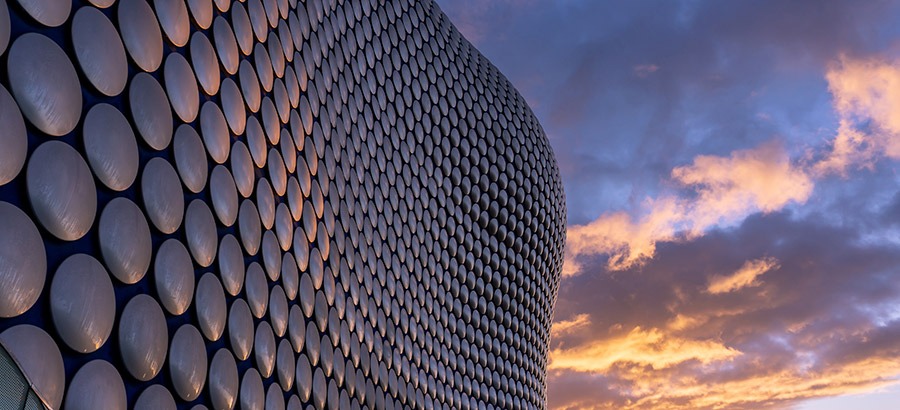Gone are the days when the city was associated with dreary ‘60s-style urban grime. In 2019, the city is fast becoming a modern force to be reckoned with in property investment and beyond – and the Big City Plan has played a major role.
This 20-year, £10bn City Centre Masterplan identified five key districts to transform, including New Street Station, Paradise and Eastside. Designed to engage different communities, support growth from the very core of the city and create a world-class city, on completion the plan will create more than 50,000 new jobs, contribute £2.1bn to the economy annually and provide more than 5,000 new homes as well as leisure and recreational facilities.
Key Regeneration Projects
Among the exciting and ambitious range of regeneration projects under the Big City Plan umbrella, the Arena Central development will see a former wholesale market area transformed into a sprawling, high-design retail, leisure and office space. This £500m regeneration project is estimated for completion by spring 2020 and sits alongside the Smithfield project, which will see thousands of new homes built in response to demand for high-quality city-centre residential property, as well as retail and office accommodation.
The Paradise project is also a major part of the Big City Plan; pitched for completion by 2026, it will comprise a mixed-use development of commercial, retail, leisure and hotel space with three new public squares and an authentic historical backdrop giving a nod to the city’s rich heritage.
Transport and Travel
Transport and travel are another key focus for regeneration. New pedestrianised areas will be introduced in line with the Big City Plan’s mission to provide enhanced walking and cycling routes as well as create a well-connected, efficient and walkable city centre.
The city’s infamous ring road will be downgraded, creating a better quality of life for residents in – and visitors to – the centre of the city and supporting another of the Plan’s key goals: to integrate sustainable development and address the impact of climate change as part of the future transformation of the city centre.
The Connected strategy is also focused on a shift from car travel to sustainable transport, including a clean air zone which will be fully implemented this coming January. Segregated cycleways and extensions to the tram route are also taking place; late last year, the local council voted to demolish the A34 flyover as part of a £27 million ‘regeneration’ scheme.
As a major cog in the Northern Powerhouse property investment wheel across key towns and cities in the Midlands and North, the HS2 development also sits firmly at the centre of travel regeneration in Birmingham. Set to revolutionise connectivity between Birmingham and London with a commute time of just 49 minutes, the new state-of-the-art station in Curzon Street will create thousands of new jobs, support local communities and encourage more and more people away from the bright lights and expensive property prices of the capital to enjoy a better quality of life in the Midlands.
Regeneration in Wider Birmingham
There’s also plenty of regeneration taking place in wider Birmingham and the extended region. Three-miles north, the vast athlete’s village in Pretty Barr is being constructed to house 6,500 people for the Commonwealth Games 2022; after the event, it will be transformed into housing.
Additional housing is being built in Sutton Coldfield and other key locations around the extended city, while ambitious projects such as Port Loop are being implemented to transform formerly derelict areas of the inner city. On completion, Port Loop will offer a new urban community including modern housing, a vast leisure centre and traffic-free streets. As the first new public green space in central Birmingham in over a decade, the community will be circled by historic canals and include vast communal gardens located just 15-minutes’ walk from the city centre.
In Edgbaston, the £330 million New Garden Square project will provide a mixed-use development of offices, apartments, shops, restaurants and bars surrounded by green space with easy connectivity to both the city centre and out into the West Midlands.
Property Investment in Birmingham
Birmingham is certainly in need of additional housing. With a population already exceeding one million, the city expects to welcome an additional 150,000 residents in the next decade as demand surges from both young professionals seeking prime job opportunities and young families attracted to the affordability and good quality of life. Those aged under 25 currently account for a huge forty percent of the population and this has pushed demand for buy to let in Birmingham to impressive highs.
Buy to let in Birmingham is becoming more and more prestigious with new and innovative housing projects creating additional scope for landlords to take advantage of opportunities. In addition, the city is mimicking the success of her northern counterpart, Manchester, by welcoming both more new start-ups than anywhere outside of London as well as acting as the HQ or a key location for many huge companies, including HSBC, Deutsche Bank, PwC and BBC Three.
As the HS2 project gathers speed, we are seeing more and more groundbreaking tech and design companies choosing the city to start their business journey. In line with the increasing career prospects and the overall strong quality of life that Birmingham offers, the city has seen an increasing number of young people including couples, families and new graduates choosing to stay in the city and take advantage of its opportunities and benefits. The city’s speedy growth attracts more and more inwards investment for a continued positive growth cycle. One thing’s for certain, the future for buy to let in Birmingham looks very bright indeed.
For more information on property investment in Birmingham, contact Alesco today.


